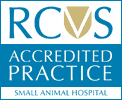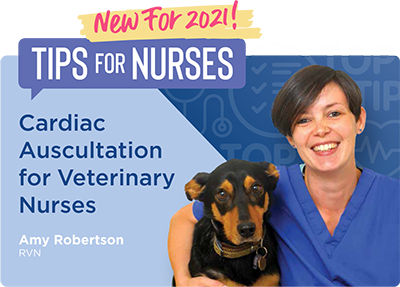 Cardiac Auscultation is an important and valued skill which like most things in life, is something that comes with practice.
Cardiac Auscultation is an important and valued skill which like most things in life, is something that comes with practice.
Any chance you may have to listen to different patients will give you a better understanding of what is normal and abnormal. As veterinary nurses, it is important we practice this skill so that we can utilise it in our everyday tasks. Whether that be nurse clinics, triage of emergency cases, anaesthesia or hospitalised patients. A good stethoscope is an essential piece of equipment within the practice and in an ideal world as veterinary professionals, we should have our own to use.
Preparation and restraint
- Locate a good stethoscope to use!
- The environment in which you auscultate the heart is equally important, so a quiet and calm room with minimal people is advisable
- Avoid having dogs in the same room as examining a cat and vice versa as this will only cause stress to your patient
- Avoid a warm room if possible to avoid panting as this will make auscultation more difficult
- Ensure your patient is well restrained
- Purring can make it near impossible to hear any heart sounds!
- Your patient should be in a standing position to aid your auscultation
Auscultating
Before auscultating, palpate both sides of the heart with the palm of your hand over the apex beat, feel for any thrills or vibrations and how strong or weak the beat is.
We hear two normal cardiac sounds in the dog and cat;
- The ‘lub’ – closure of the atrioventricular valves due to contraction of the ventricles. This is a louder, duller sound.
- The ‘dub’ – closure of the pulmonic and aortic valves following the ventricular contraction and emptying of the ventricles. This is a shorter higher pitched sound.
- Any other sounds are classed as additional sounds and are described by their location.
If possible, you should feel for a peripheral pulse simultaneously to ensure there are no pulse deficits. This is when there is a heart sound with no accompanying pulse produced, meaning there could be a cardiac arrhythmia present.
Where to listen for heart murmurs
Using your stethoscope, move the diaphragm cranially and caudally over four places on the LEFT and RIGHT side of the heart to listen to each valve;
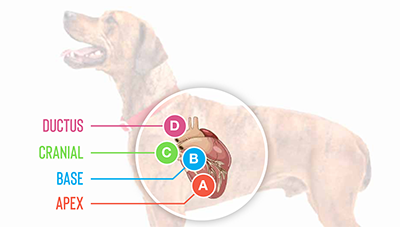
 APEX is the mitral valve and this is where the beat is strongest. APEX is the mitral valve and this is where the beat is strongest. |
 BASE is the aortic valve and is slightly up and cranial to the apex. BASE is the aortic valve and is slightly up and cranial to the apex. |
 CRANIAL move up a rib space cranially to hear the pulmonic valve. CRANIAL move up a rib space cranially to hear the pulmonic valve. |
 DUCTUS (left only) you need to push hard right up and under the axilla to hear the Ductus DUCTUS (left only) you need to push hard right up and under the axilla to hear the Ductus |
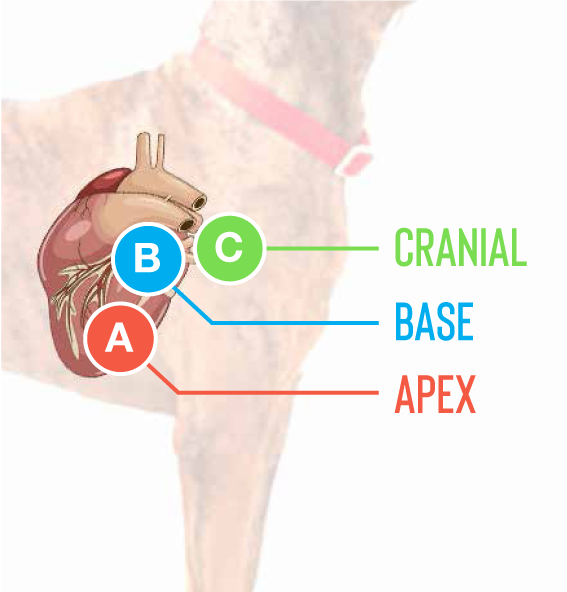
- It is important to take your time auscultating the heart and listen for at least one minute on each side.
- Record the heart rate, rhythm, intensity and clarity of the heartbeat.
Murmurs
A murmur is an abnormal heart sound heard on auscultation. They are individual to each and every patient and usually require investigating. They are often graded out of 6, 1 being the quietest and 6 being the loudest. They can also be described as ‘louder’ or ‘quieter’ than the heart sounds themselves. It is important to note that not every veterinary professional will agree on the presence or grade of a heart murmur
A heart murmur could be present due to disease of the heart valves, congenital heart defects or narrowing of the blood vessels. In some puppies or kittens, it could be due to fast flowing blood through a small heart which may eventually disappear on its own as the animal grows. They often require further investigation which may include referral to a cardiologist for x-rays, echocardiography and ECG monitoring.
Other heart sounds
It is possible to hear other sounds when auscultating the heart. A ‘gallop’ sound is often lower pitched and can sound like a galloping horse when heard. Muffled heart sounds can be associated with pleural and pericardial effusion.
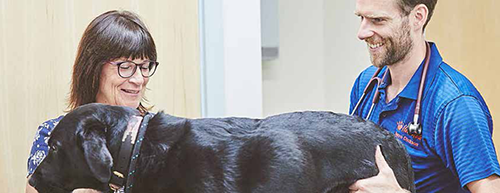
If you have any patients that present with challenging heart issues the Cardiology team here at Cave Veterinary S will be happy to advise and assist.


